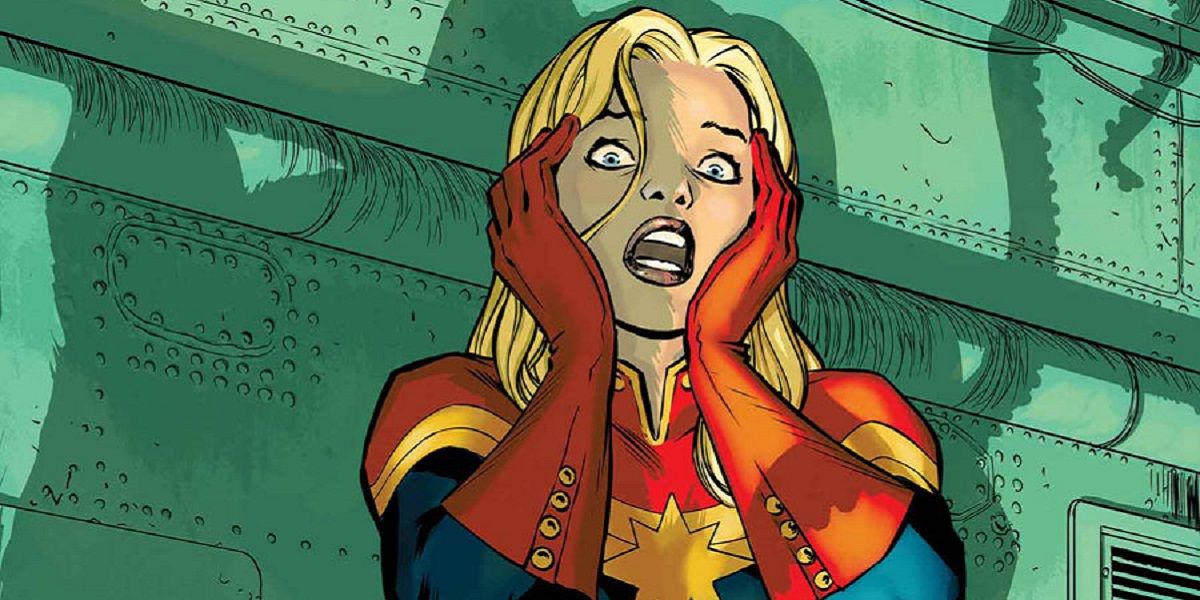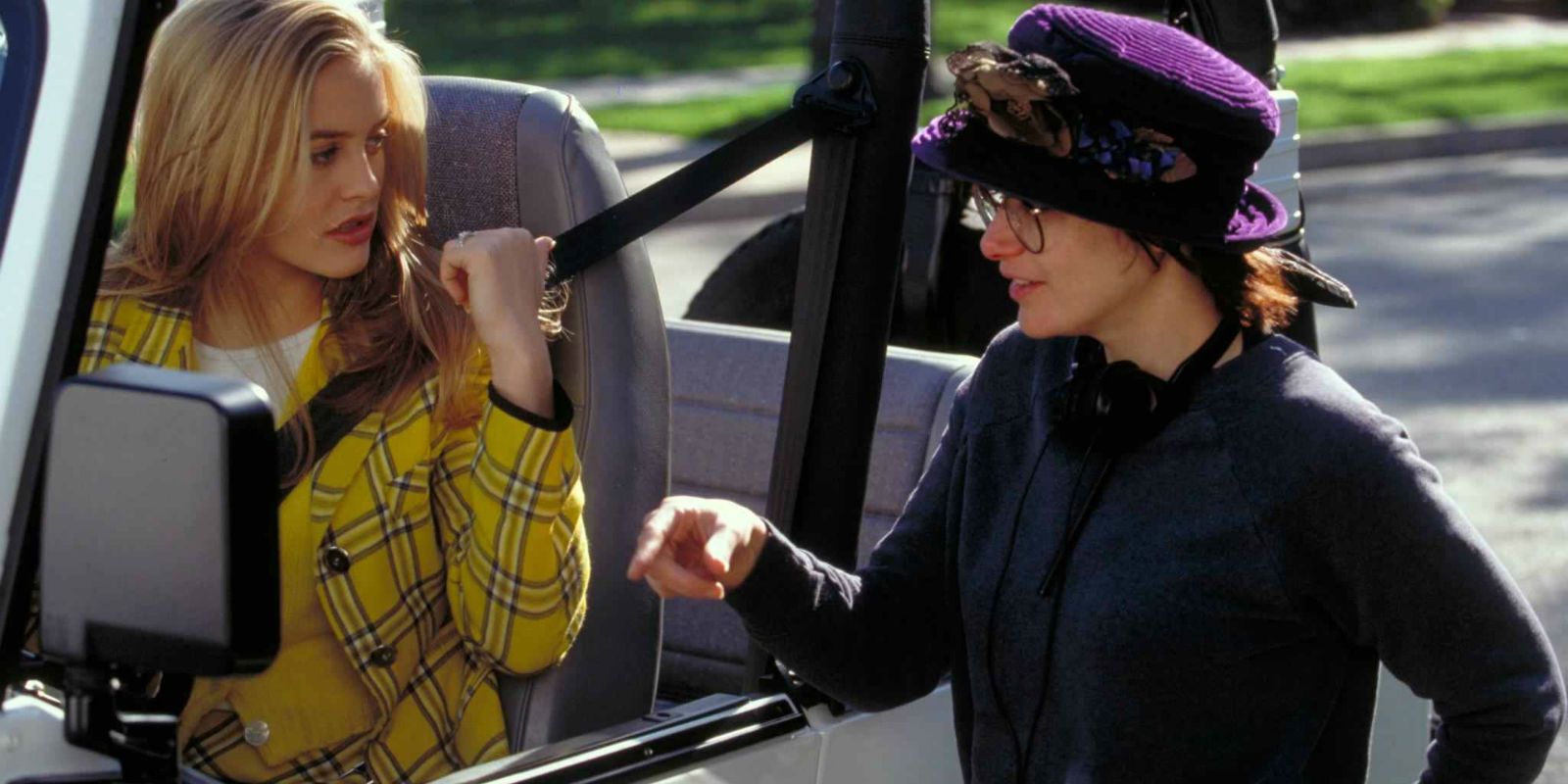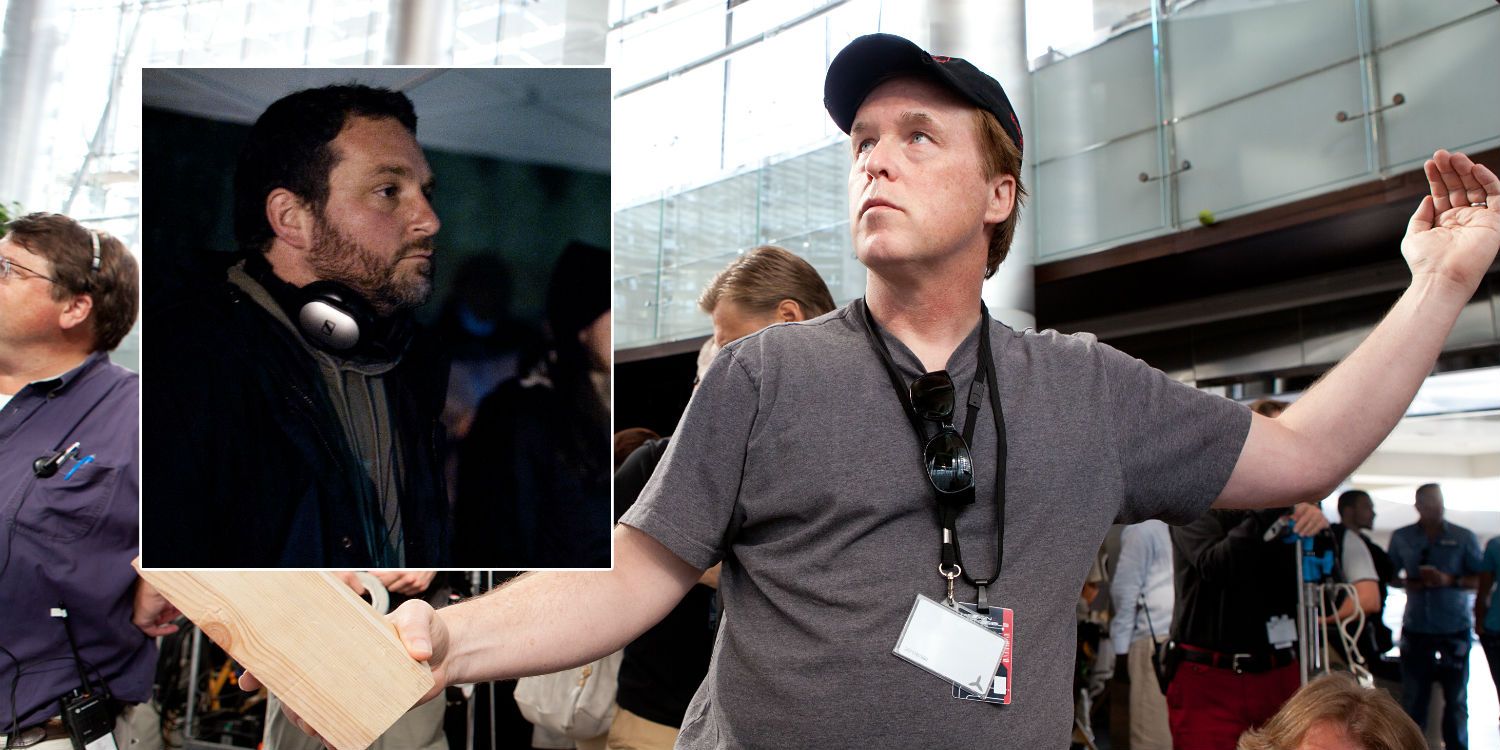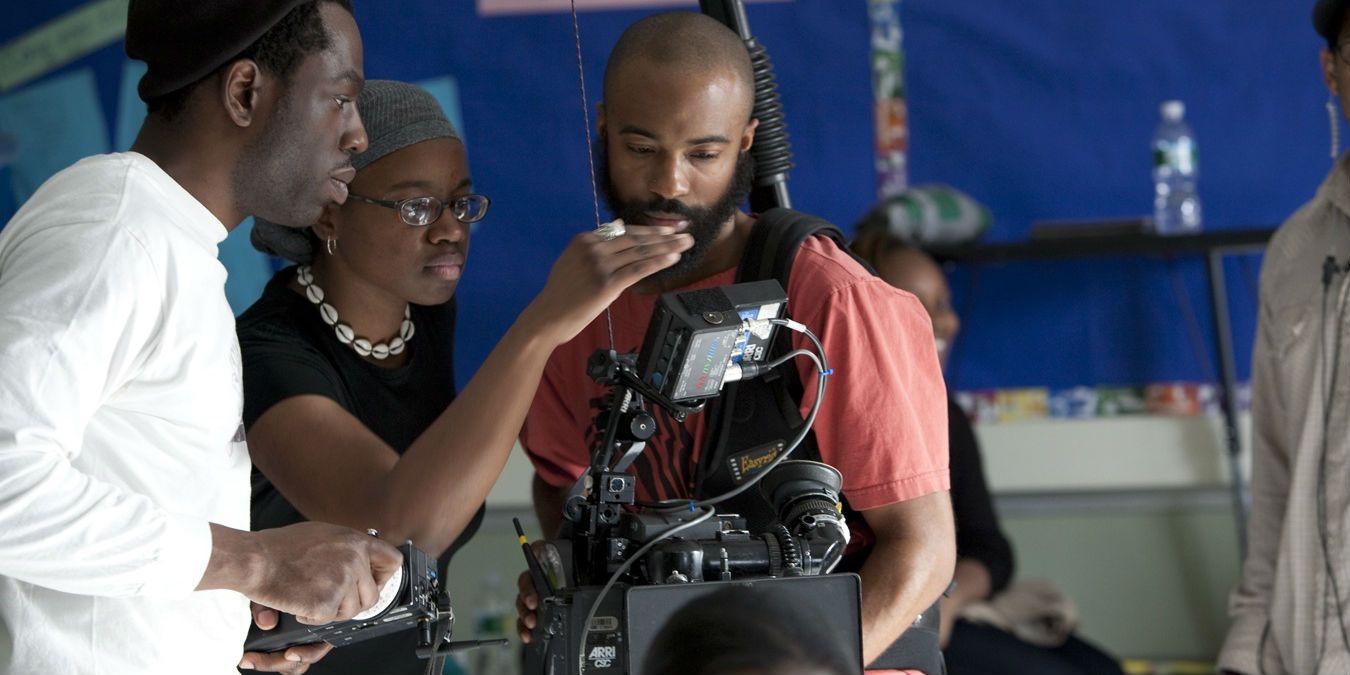While Captain Marvel, the first film in the Marvel Cinematic Universe to be headed by a female superhero, is still many months from production, rumors about its eventual director have been emerging ever since its announcement. Almost all the major rumored talents have been women, something that almost never happens in Hollywood. Kevin Feige has spoken openly about the importance of hiring a woman to helm the project, noting that while gender "will be not a requirement to make a great version of Captain Marvel... it's something we think is important". This statement, while appreciated by many women in the industry, is made all the more glaring by the lack of women on the Marvel slate for the rest of their cinematic universe.
Marvel's shortcomings when it comes to diversity behind the camera aren't an anomaly in the industry. The DC Universe has one female director – Wonder Woman’s Patty Jenkins – and recently brought back Suicide Squad director David Ayer to helm the planned villainess follow-up Gotham City Sirens. Disney’s expanded slate of live-action films also only has one woman director at the table in the form of Ava DuVernay, who is set to direct A Wrinkle in Time. Neither Paramount nor 20th Century Fox has a film by a woman director coming out between 2016 and 2018, and the former hasn't released a single film helmed by a woman since 2010.
Star Wars producer Kathleen Kennedy was recently criticized for comments regarding the lack of women directors working on the series, citing the supposed lack of experience from candidates in the field:
"We want to make sure that when we bring a female director in to do Star Wars, they’re set up for success. They’re gigantic films, and you can’t come into them with essentially no experience… We want to really start to focus in on people we would love to work with and see what kinds of things they’re doing to progress up that ladder now, and then pull them in when the time is right."
A recent report from the Center for the Study of Women in Television and Film at San Diego State University revealed that only 7% of directors working on the 250 highest grossing releases of 2016 were women - a decline of 2% from the previous year. When it comes to the balance of gender behind the camera, things aren't getting better in Hollywood; in fact, they may be getting worse. It is in this context that Kennedy’s comments regarding supposed lack of experience become all the more revealing, particularly when considering how male directors in the industry are treated.
Jon Watts, director of the upcoming Spider Man: Homecoming, has two directorial credits to his name prior to being hired by Marvel: horror movie Clown and thriller Cop Car. Their combined domestic gross comes to just under $200,000, and neither of them could be classified as equivalent to a major blockbuster movie. Prior to directing Captain America: The Winter Soldier, the Russo brothers had been more famous for their TV work, with their last film being the Owen Wilson comedy You, Me and Dupree. Jordan Vogt-Roberts's indie debut The Kings of Summer made just over $1m at the box office, and his next film is Kong: Skull Island. The trend indicates a different measuring stick of experience for male directors, whose scrappy indie projects are seen as clear evidence of their blockbuster prowess. Yet women directors, who account for 28% of all directors working in indie film, have a steeper mountain to climb.
In the few instances where women are offered more expensive or prestigious films to work on, it seems as though a different set of rules apply for what counts as success. Female directors are far less likely to receive bigger budgets than their male counterparts. Kathryn Bigelow became the first woman to receive a budget over $100m for K-19: The Widowmaker, and to this day, the grand total of women directors working in live action film who have worked with a budget exceeding that number sits at three.
This problem is exacerbated by the odd assumption that women don’t want to direct big budget stories, preferring an indie sensibility. This was the suggestion put forward by Jurassic World director Colin Trevorrow, claiming, “Many of the top female directors in our industry are not interested in doing a piece of studio business for its own sake." What seems to be intended as a compliment – the idea that women are too artistically focused to want to ‘sell out’ to the studio system – comes across as painfully uninformed of the realities women directors face.
For women directors, failure (or even mildly underperforming) is not an option. After a financially successful debut with The Peacemakers, director Mimi Leder's sophomore effort Deep Impact stormed the box office and grossed close to $350m worldwide, making it the 6th highest grossing film of 1998, and the highest grossing film by a female director until Twilight in 2008. Her next film, Pay It Forward, was less successful. After a series of mixed to negative reviews, the film grossed just over $55.7m on a $40m budget. She didn’t direct another film for 9 years, and she admitted that it became hard to find work afterwards, noting "I was in movie jail."
Amy Heckerling (Clueless) discussed the problems of "director jail" and the double standards of it when gender plays a part, noting, "I do know some men who have been in director jail, but it’s harder [for women] because [men are] allowed a couple of failures before they get sent there. It’s uneven". Josh Trank’s Fantastic Four was infamous in its very public failings, with Trank's erratic behavior during filming a centerpiece of the press coverage, yet a year after its release his newest project was announced. It’s hard to imagine a woman director bouncing back after a flop like Trank’s with barely a scratch on their record.
This imbalance isn't limited to the director's chair: women are underrepresented in almost every other field of film-making. The Center for the Study of Women in Television and Film's study further revealed that, of the top 250 highest grossing films of 2016, women accounted only for 24% of producers (a 2 point decrease from the previous year), 17% of editors (a 5% decline), 4% of sound designers (1% decline) and 5% of cinematographers (1% decline). When there are so few women in the major elements of film-making, it becomes harder to make substantive change. How can progress be made when there are so few voices at the table willing to speak about it?
The declining number of women producers plays a major part in the lack of women helming major blockbusters, as does the lack of female studio heads. Projects are mostly still greenlit by white men, with the prevailing assumption of Hollywood, and indeed entertainment at large, being that women’s stories are solely for women whereas men’s stories are for everyone. This seldom-challenged hypothesis is also applied to race, with whiteness remaining the default mode of universality according to the status quo.
This is demonstrably untrue. In 2015, Universal Studios releases totaled $6.7 billion at the box office, thanks to an array of films with notable gender and racial diversity and appeal, including Fifty Shades of Grey, Trainwreck, Furious 7, and Straight Outta Compton. The executive responsible for this: Donna Langley, noted by the Hollywood Reporter for "an uncommon willingness to embrace diverse material in terms of race and gender and not to set her sights only on the usual audience demographic: young, white males." This is a strategy that works, and one that other studios have made note of. The revitalized Star Wars universe has been applauded for its focus on female protagonists and diverse ensembles, yet that diversity doesn't extend behind the camera or up to positions of power within the studio structure.
The numerous barriers in place for women directors when it comes to higher risk projects exacerbates the industry’s disheartening lack of gender parity by reducing the work to a zero-sum game: Have your film flop and never work again, or have it be a hit and all your hard work deemed a fluke (or handed off to male directors for the sequels, as was the case for both Twilight and Fifty Shades of Grey).
When asked about the problem, actor-director Jodie Foster said that it all came down to fear: “This is the most risk-averse time that I can remember in movie history... You’re going to go with the guy that looks like you." A famous story regarding Colin Trevorrow, who moved from tiny budget indie comedy to Jurassic World over the course of two films, highlights this issue. Brad Bird (Mission: Impossible - Ghost Protocol) recommended Trevorrow to Kathleen Kennedy and Stephen Spielberg, telling them, "There is this guy that reminds me of me."
There are countless women directors working today who would be excellent choices to helm Captain Marvel, a Star Wars film or a brand-new franchise. Think of incredible talents such as Andrea Arnold (American Honey), Lynne Ramsay (We Need to Talk About Kevin), Amma Asante (A United Kingdom), Marielle Heller (The Diary of a Teenage Girl), Dee Rees (Mudbound), Mira Nair (Queen of Katwe), Leslye Headland (Sleeping With Other People), Niki Caro (Whale Rider), Catherine Hardwicke (Lords of Dogtown), and too many more to mention.
The balance is all the harder to redress since it's a symptom of entrenched attitudes in Hollywood, and a self-sustaining status quo. In an industry that loves the safe and familiar (as evidenced by the dominance of sequels and reboots among big-budget projects), it's easy to see why female directors are irrationally seen as a risk, simply by dint of their rarity. As Punisher: War Zone director Lexi Alexander commented on the latest episode of the Fan Bros podcast:
"A white guy comes in and looks like Spike Jonez, he has potential based on his looks. I walk in and I'm a risk factor based on my looks. We have to change that."
While hiring more women to direct the biggest movies won't solve all of the industry's problems, it would send a crucial message of change through the lineage of Hollywood power, and help to level the playing field to a fairer advantage.




